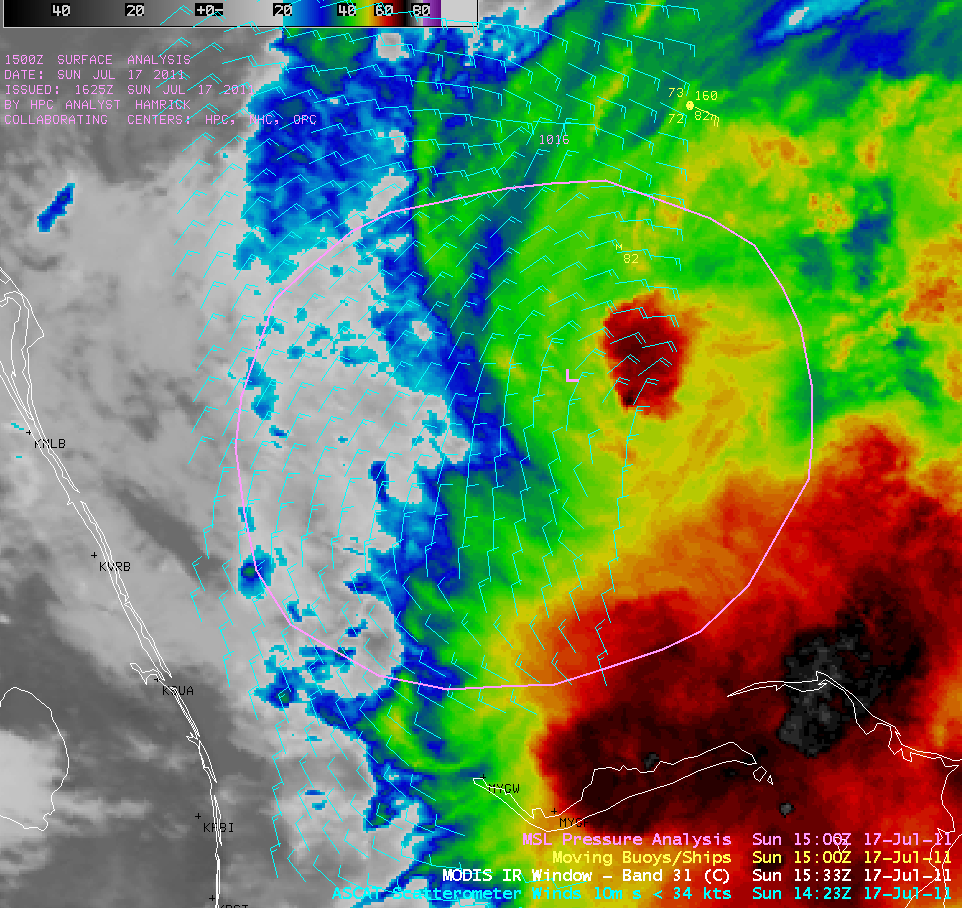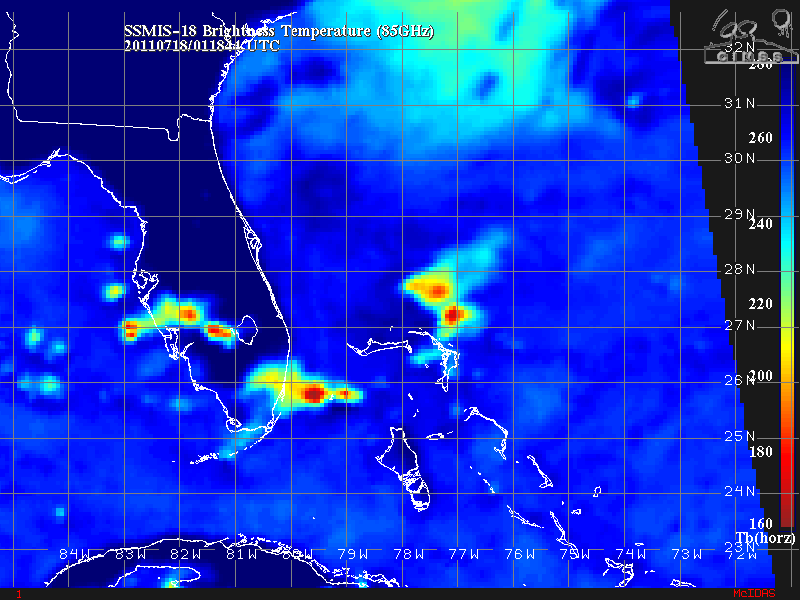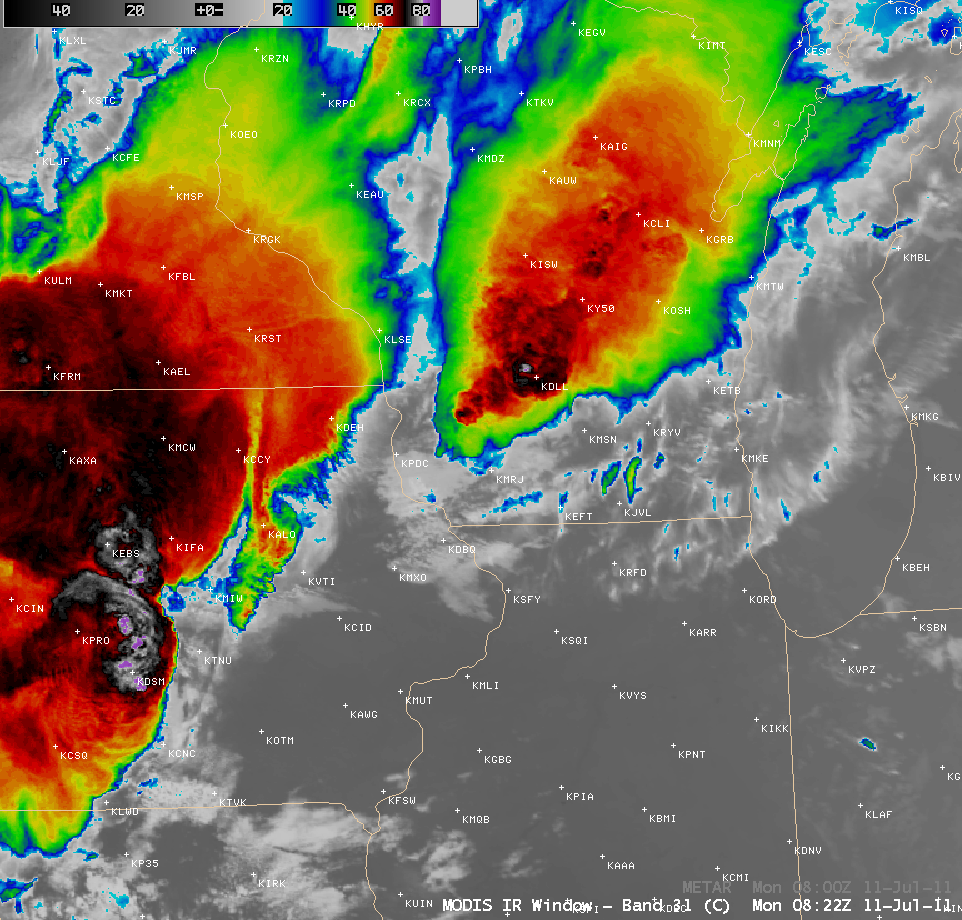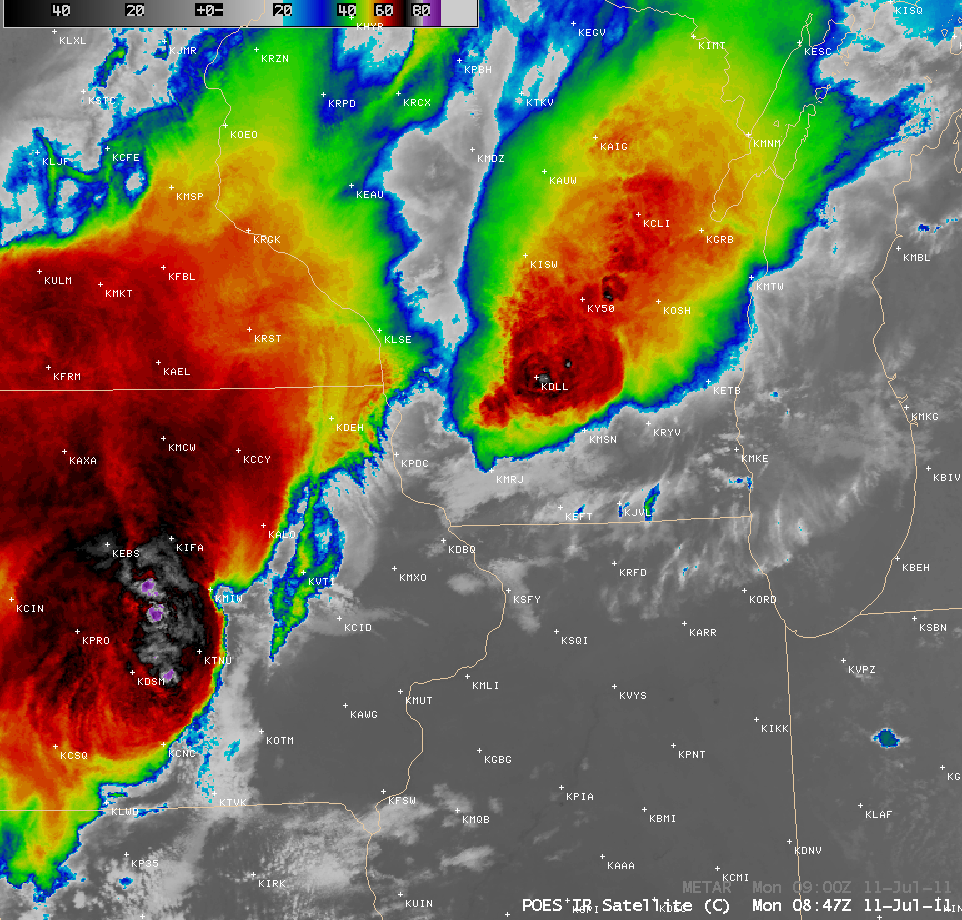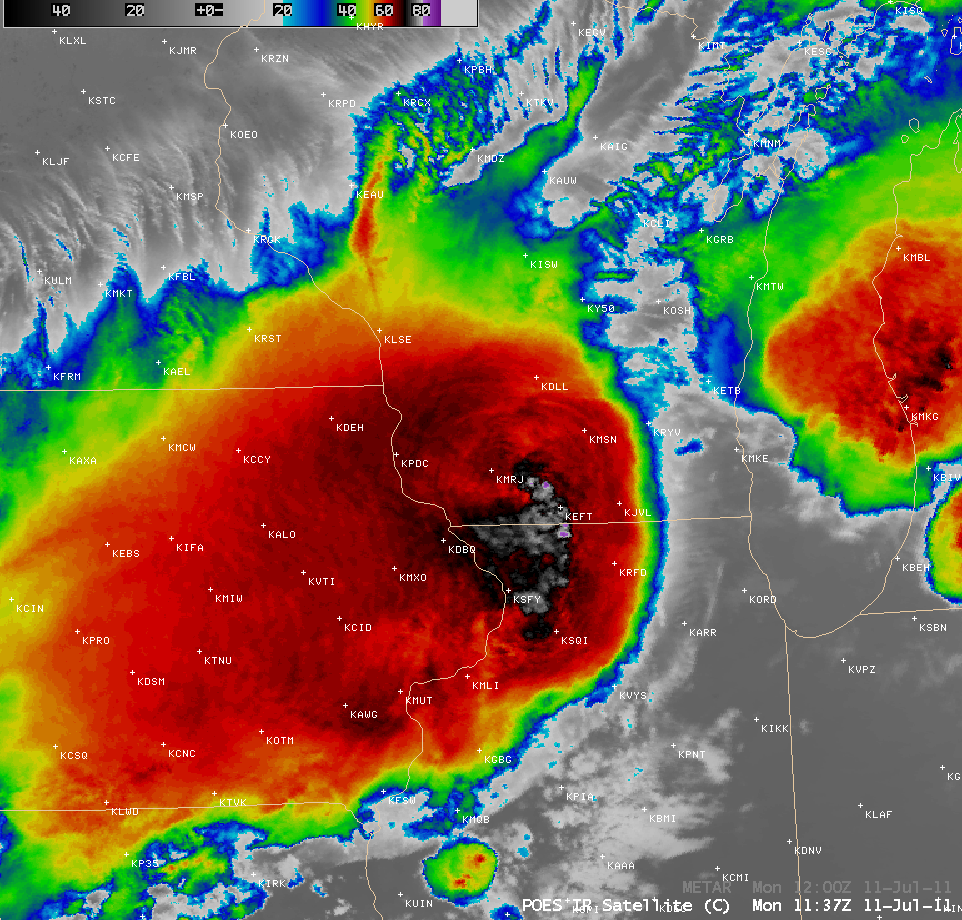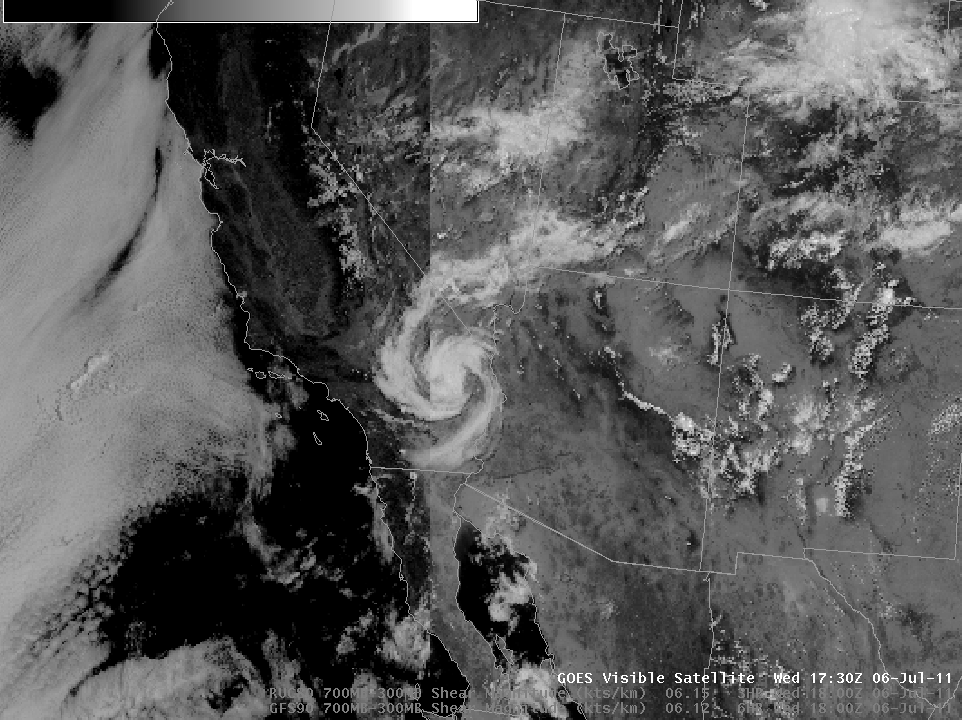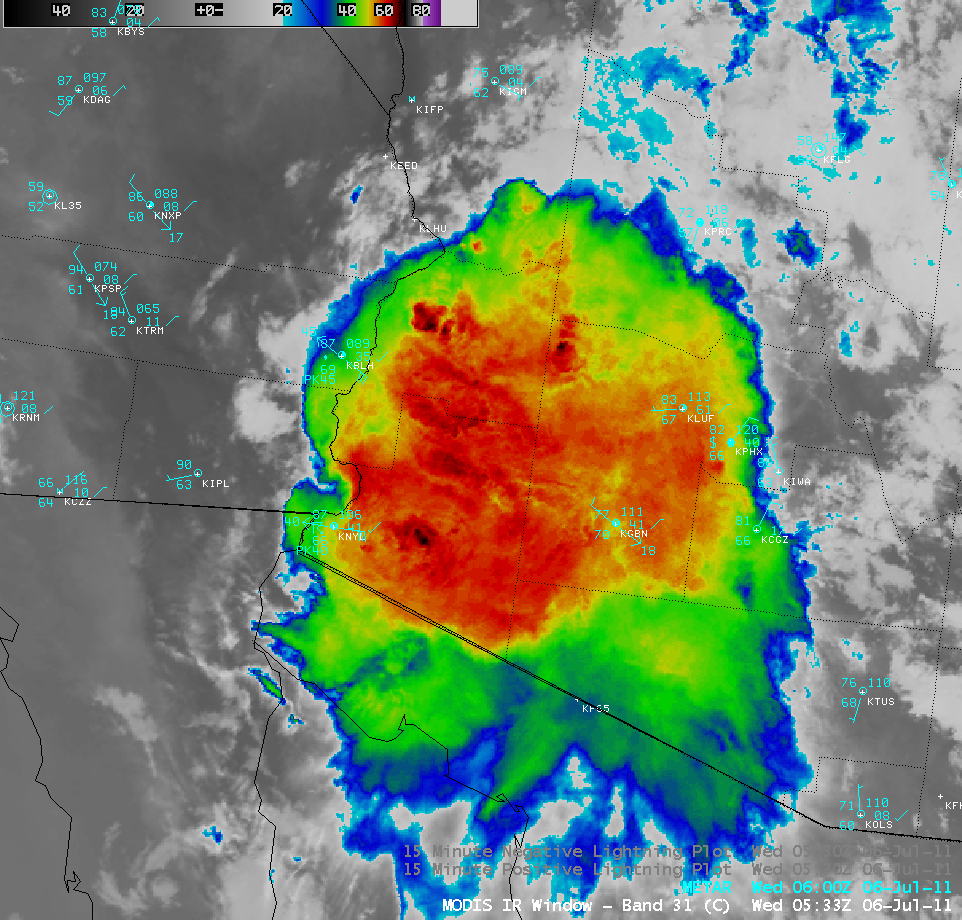07 July 2011 marks the 5 year anniversary of CIMSS providing MODIS images and products for National Weather Service (NWS) forecast offices to add to their local AWIPS workstations (via LDM subscription). This important “Research to Operations” effort has been a cornerstone of the GOES-R Proving Ground project. As of July 2011, CIMSS has provided experimental MODIS... Read More
07 July 2011 marks the 5 year anniversary of CIMSS providing MODIS images and products for National Weather Service (NWS) forecast offices to add to their local AWIPS workstations (via LDM subscription). This important “Research to Operations” effort has been a cornerstone of the GOES-R Proving Ground project. As of July 2011, CIMSS has provided experimental MODIS imagery in real-time to 70 NWS sites across the US. Shown below are a few examples of the types of MODIS images and products that are being distributed.

MODIS 0.65 µm isible channel and 2.1 µm near-IR "snow/ice" channel images
A comparison of MODIS 0.65 µm visible channel and 2.1 µm near-IR “snow/ice channel” images (above) shows the values of the snow/ice channel imagery for locating areas of flooding across the upper Missouri River basin (water is a strong absorber at the 2.1 µm wavelength, so it shows up very dark on the images).

MODIS 3.7 µm and GOES-13 3.9 µm shortwave IR images
A comparison of 1-km resolution MODIS 3.7 µm and 4-km resolution GOES-13 shortwave IR images (above) demonstrates the value of improved spatial resolution for the detection of “hot spots (red to yellow color enhancement) associated with active fires that were still burning along the periphery of the Honey Prairie Fire in southeastern Georgia.

MODIS and GOES fog/stratus product images
A comparison of 1-km resolution MODIS and 4-km resolution GOES-11 fog/stratus product images (above) again shows the value of higher spatial resolution for identifying the edges of fog features along the California coast. Also note the appearance of ship tracks in the offshore stratus deck on the MODIS image.

MODIS 11.0 µm and GOES-13 10.7 µm IR images
A comparison of 1-km resolution MODIS 11.0 µm IR and 4-km resolution GOES-13 10.7 µm IR images (above) shows the improved depiction of transverse banding cirrus features (which are a signature of potential turbulence). There were a few pilot reports of light to moderate turbulence across that particular region of transverse banding.
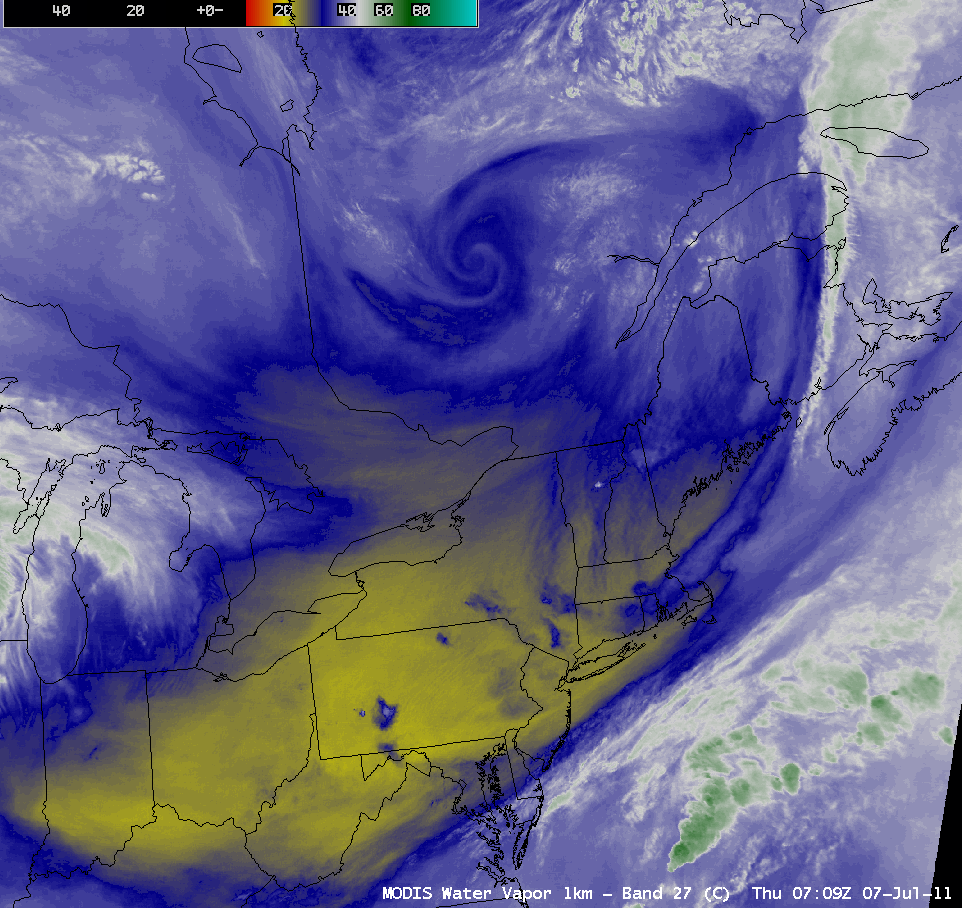
MODIS 6.7 µm and GOES-13 6.5 µm water vapor channel images
A comparison of the 1-km resolution MODIS 6.7 µm and the 4-km resolution GOES-13 6.5 µm “water vapor channel” images (above) shows a much better depiction of the compact middle-tropospheric vorticity feature over Quebec, Canada.

MODIS 0.65 µm visible channel image + MODIS Sea Surface Temperature product
On the previous day (06 July 2011), generally cloud-free conditions over the western Great Lakes allowed a nice view of the Sea Surface Temperature (SST) across that region — note that SST values were still as cold as 40.3º F over parts of Lake Superior (above). The corresponding MODIS 0.65 µm visible image showed a few well-defined lake breeze boundaries, as well as a thin northwest-to-southeast oriented plume of smoke from wildfires burning in Canada.
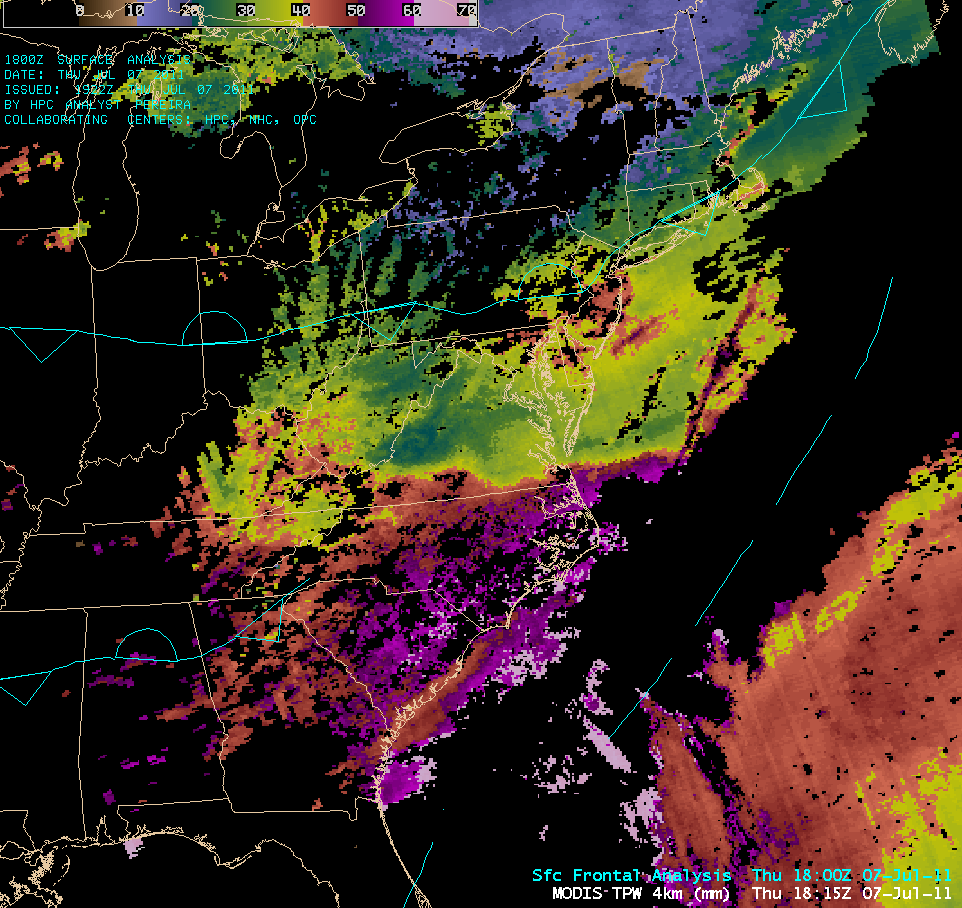
MODIS Total Precipitable Water, Lifted Index, K Index, and Total Totals products
4-km resolution MODIS products that might be useful for assessing the pre-convective environment include the Total Precipitable Water, Lifted Index, K Index, and Total Totals products (above).
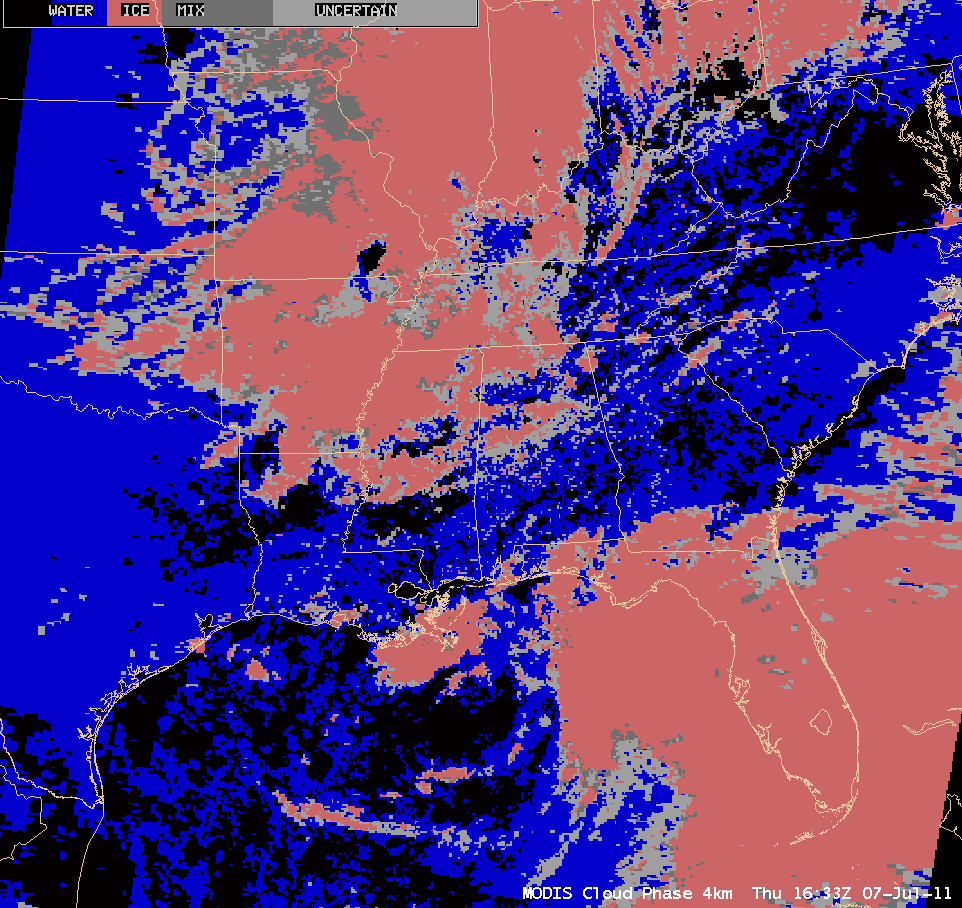
MODIS Cloud Phase and Cloud Top Temperature products
Other 4-km resolution products include the Cloud Phase and Cloud Top Temperature products (above).
View only this post
Read Less


